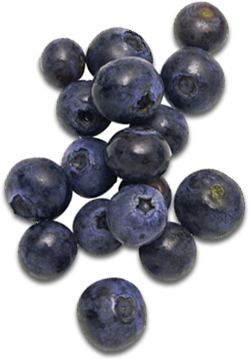no items to display
Making Sense of Salt: Healthy Salt Substitutes for Those Who Need to Reduce Sodium Intake
Confused about how much salt per day is okay to eat and whether you need to reduce sodium intake? You’re not alone. Guidelines about sodium consumption can be confusing.
Salt: No Scientific Consensus
On the one hand, you have the Centers for Disease Control and Prevention. The government agency recently conducted a phone survey and found that 90 percent of respondents consumed more than 2,300 milligrams of sodium per day, the limit set by the U.S. Department of Health and Human Services. Meanwhile, the American Heart Association recommends an even lower limit of 1,500 milligrams daily.[1]
However, based on recent research, many scientists think concerns about sodium are overblown and that the recommendations are too strict. Some think that up to 6,000 milligrams per day is safe and levels below 3,000 milligrams may be unsafe. The average American consumes about 3,500 milligrams of sodium per day.[2]
Hypertensives: You’re Not off the Hook
One general area of agreement, though, is that people with high blood pressure do need to reduce sodium intake. If you fall into that category, the best way to achieve that goal is to eat more whole foods like fruits and vegetables and fewer processed foods like chips, baked goods, canned soups, lunch meats, and ready-made sauces and dressings. (And that’s good advice for anyone!) It’s estimated that 75 percent of the sodium Americans consume comes from processed foods and only 15 percent from cooking or adding salt to foods. (The remaining 10 percent occurs naturally in food.)[3]
Get Salt-Smart!
Being salt-smart also means learning to read labels. The phrase “low sodium” on a food label means it has 140 mg or fewer of sodium per serving. “Reduced sodium” means the food has 25 percent less sodium per serving than a pre-existing recipe. Also, restaurant meals are almost always higher in sodium than home-cooked ones, so it’s a good idea to limit eating out to special occasions and to order carefully when you do.
Although most sodium comes from sources other than your salt shaker, there are a lot of ways to add flavor to your food that don’t rely on salt. Consider these salt substitutes:
· Substitute sea salt for regular salt. It’s still sodium, but the larger crystals deliver a bigger burst of salty taste, so you can use less of it.
· For sodium-free seasoning, herbs and spices are the easiest way to go. Try adding black or cayenne pepper, garlic or garlic powder, basil, cumin, or tarragon to foods instead of salt.
· You can also try reproducing popular salt substitute herb blends by mixing dried parsley, rosemary, sage, thyme, celery seed, cumin, and garlic powder.
· Nutritional yeast is another tasty salt substitute. It has a rich, cheesy flavor, and can be sprinkled on steamed veggies, whole grain toast, or air-popped popcorn.
· Some people like salt substitutes made from potassium chloride, but many find they have an off taste, and they are unsafe for those with kidney problems.
If you have high blood pressure, you can also try increasing your consumption of potassium-rich foods, such as dairy products, bananas, leafy greens, potatoes, citrus fruits, and beans, because potassium helps lower blood pressure.
Juice Plus+: Safe for Salt Watchers
If you’re concerned about your sodium intake, you may be relieved to learn that Juice Plus+ Orchard and Garden blends have 5 mg of sodium per serving, Juice Plus+ Vineyard blend is sodium-free, and Juice Plus+ Complete Nutrition bars are a low sodium food, with just 115-135 mg sodium per serving.
Do you or does someone you love have high blood pressure? Are you trying to reduce sodium intake? What are your tricks?
References:
[1] Nordum A. 9 out of 10 Americans consume too much salt, CDC says. International Business Times. 2015 Jul 2. http://www.ibtimes.com/9-out-10-americans-consume-too-much-salt-cdc-says-1994838
[2] Whorisky P. More scientist doubt salt is as bad for you as the government says. Wonkblog. The Washington Post. 2015 Apr 6. http://www.washingtonpost.com/blogs/wonkblog/wp/2015/04/06/more-scientists-doubt-salt-is-as-bad-for-you-as-the-government-says/
[3] Whorisky P. More scientist doubt salt is as bad for you as the government says. Wonkblog. The Washington Post. 2015 Apr 6. http://www.washingtonpost.com/blogs/wonkblog/wp/2015/04/06/more-scientists-doubt-salt-is-as-bad-for-you-as-the-government-says/






